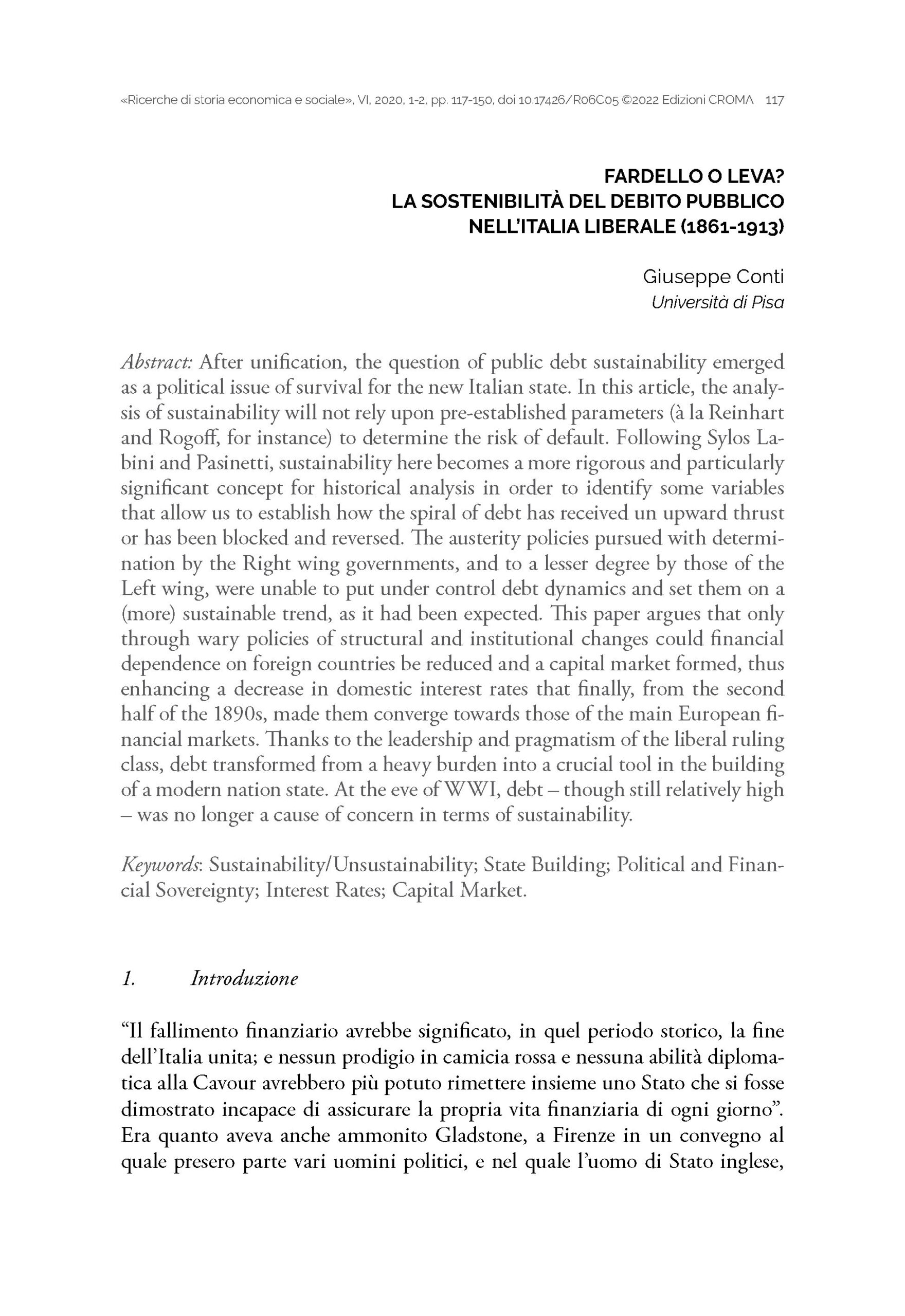Fardello o leva? La sostenibilità del debito pubblico nell’Italia liberale (1861-1913)
6,00 €
Abstract: After unification, the question of public debt sustainability emerged as a political issue of survival for the new Italian state. In this article, the analysis of sustainability will not rely upon pre-established parameters (à la Reinhart and Rogoff, for instance) to determine the risk of default. Following Sylos Labini and Pasinetti, sustainability here becomes a more rigorous and particularly significant concept for historical analysis in order to identify some variables that allow us to establish how the spiral of debt has received un upward thrust or has been blocked and reversed. The austerity policies pursued with determination by the Right wing governments, and to a lesser degree by those of the Left wing, were unable to put under control debt dynamics and set them on a (more) sustainable trend, as it had been expected. This paper argues that only through wary policies of structural and institutional changes could financial dependence on foreign countries be reduced and a capital market formed, thus enhancing a decrease in domestic interest rates that finally, from the second half of the 1890s, made them converge towards those of the main European financial markets. Thanks to the leadership and pragmatism of the liberal ruling class, debt transformed from a heavy burden into a crucial tool in the building of a modern nation state. At the eve of WWI, debt – though still relatively high – was no longer a cause of concern in terms of sustainability.

